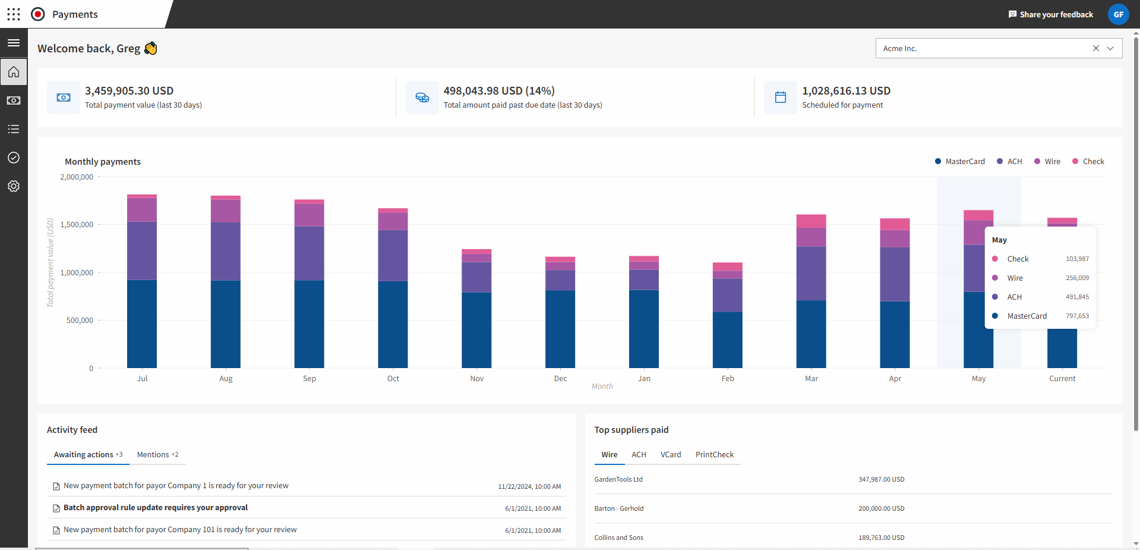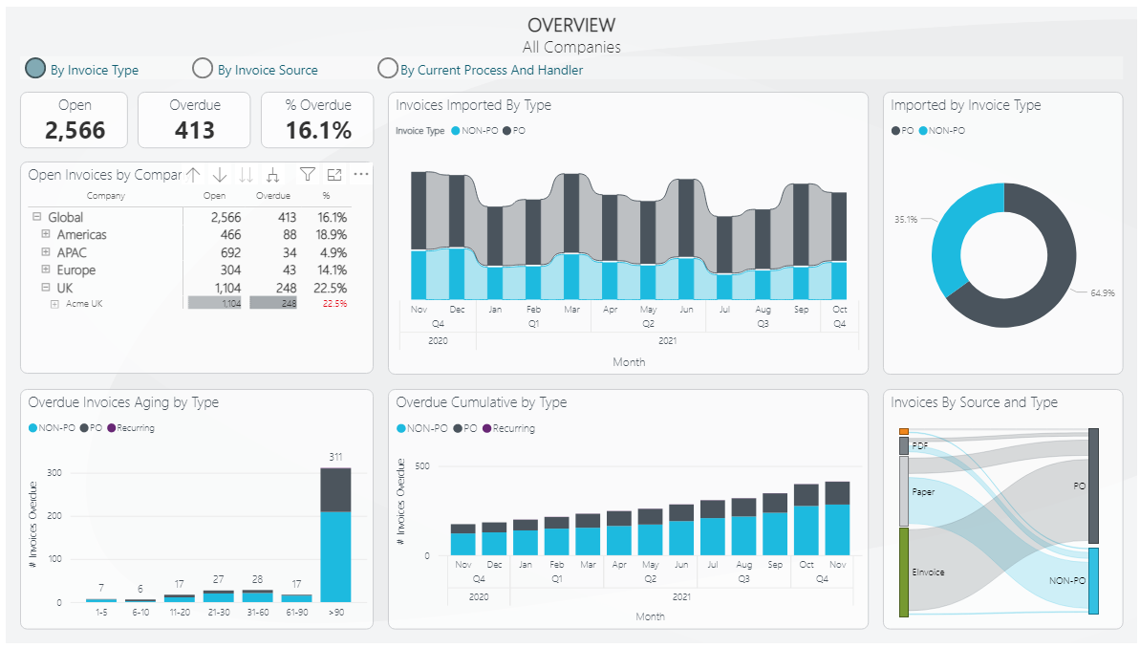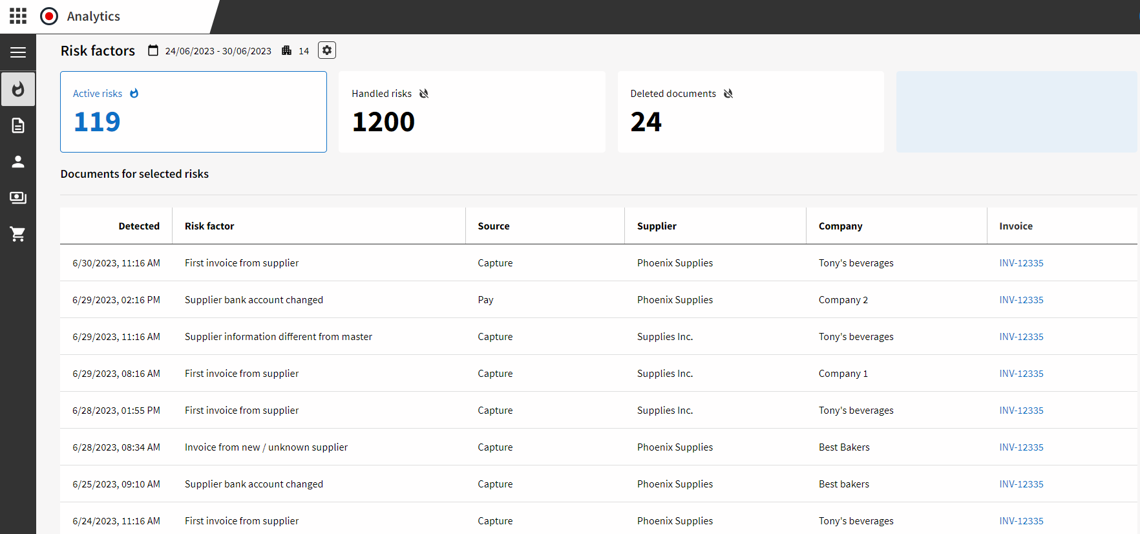How AI is reshaping spend forecasting through AP automation
- Introduction
- Leveraging invoice data as a forecasting asset
- The power of real-time processing
- From historical reporting to predictive intelligence
- Empowering finance teams with AI-driven decision making
- Breaking the cycle of manual forecasting
- Medius and the future of AP intelligence
- Transform your spend strategy with Medius AI solutions
Hear what's covered in this article:
Finance leaders are being asked to do more with less. In unpredictable markets, real-time insight into spending is no longer a luxury. It is a necessity. While traditional AP automation has helped reduce manual tasks and accelerate invoice processing, it often falls short of delivering the insights finance teams need to plan ahead. Many organizations still rely on lagging reports, manual reconciliations, and month-end close processes to understand their financial position. That leaves too many decisions based on incomplete or outdated information.
AI-powered AP automation is changing that. By digitizing the invoice lifecycle and analyzing spend data in real time, finance teams can unlock the visibility they need to forecast cash flow, spot patterns, and take smarter action. Instead of reacting to budget overruns or missed payment terms, they can see what is coming and plan accordingly.
This shift is especially important for mid-sized and enterprise companies with complex vendor networks and global operations. When invoices flow in from multiple sources, departments, or regions, traditional reporting cannot keep pace. But intelligent AP systems that learn from data can help teams anticipate trends before they impact the bottom line.

Leveraging invoice data as a forecasting asset
The invoice is more than a record of payment. It is a rich source of data that, when captured and processed correctly, provides deep insight into spending behavior. Vendor costs, payment timing, approval trends, and category level breakdowns all live within invoice history.
AI-powered systems can extract and interpret that information at scale. This means finance teams no longer need to wait for monthly reports to understand where funds are going. Instead, real-time invoice insights allow teams to view spend activity as it happens.
This invoice data becomes the foundation for accurate spend forecasting. With the right visibility, organizations can model future obligations, assess vendor trends, and identify early indicators of budget risk.

The power of real-time processing
Traditional AP processes rely on batch approvals, paper invoices, and reconciliation delays. That makes it difficult to understand pending liabilities at any given moment. Finance teams often work from static snapshots rather than a continuous view of spend.
Modern systems built for automated AP processing change that by providing instant visibility into approvals, exceptions, and upcoming payments. As soon as an invoice is received and validated, its impact on budget and cash flow is visible. There is no waiting or uncertainty. For many teams, this also becomes the moment to streamline vendor payments.
This level of visibility improves more than just timing. It empowers finance leaders to take informed action. If one department is trending above forecasted spend or if invoice volume spikes unexpectedly, alerts can trigger proactive discussions. If payment terms are creating unnecessary cash strain, insights can help teams adjust or renegotiate.
With real time access to spend data and the ability to act on it, AP becomes a strategic function rather than a back office bottleneck.
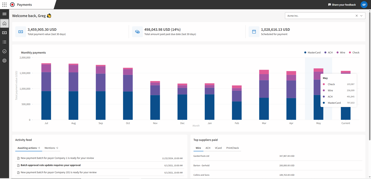
From historical reporting to predictive intelligence
AI thrives on patterns. When applied to AP, it can analyze vendor behavior, payment history, and seasonality to identify what is likely to happen next. Instead of just summarizing spend after the fact, AI enables teams to anticipate spend curves and prepare for them.
With predictive spend insights, finance teams can forecast based on more than just averages. They can incorporate known variables like recurring expenses, changing approval dynamics, and shifting supplier behavior.
This also allows for more strategic planning. Leaders can simulate spend scenarios, run stress tests on cash reserves, or plan capital allocation with greater accuracy and rest easy knowing that the data supporting these actions are rooted in rock-solid, AI-backed AP processes. These capabilities strengthen partnerships across procurement and operations by aligning budgets with real activity, not assumptions.

Empowering finance teams with AI-driven decision making
AI helps finance professionals go beyond basic reporting by turning invoice data into actionable insights they can use to forecast spend, flag exceptions, and make more confident decisions. When teams have immediate access to trusted information, they can shift from reactive workflows to proactive financial planning. AI helps identify not only what is happening, but why it is happening. That context is essential for strategic action.
For instance, AI might detect that a specific vendor is consistently triggering exceptions or that one business unit is trending above its forecasted spend. These insights drive accountability and help pinpoint areas for process improvement or policy adjustment.
Medius supports these outcomes through its AI powered solutions designed to surface spend visibility improvements at every step. From invoice intake to payment execution, the system continuously monitors trends and flags outliers before they create problems.
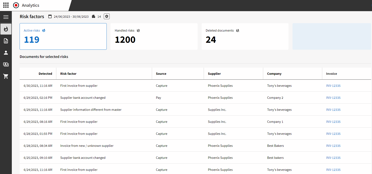
Breaking the cycle of manual forecasting
Many finance teams still rely on spreadsheets to consolidate AP data, update projections, and report to leadership. These methods are time consuming and error prone. They also cannot scale as the organization grows.
By implementing modern AP automation, teams can reduce their dependence on manual tools and gain confidence in their forecasts. They can maintain real-time data accuracy synced back to their finance planning system(s), generate new or recurring dashboards, and update assumptions without starting from scratch each quarter.
This helps not only with operational efficiency but also with strategic clarity. When data is live and actionable, the finance team becomes a stronger partner across the business.
Medius and the future of AP intelligence
As the role of finance evolves, the systems that support it must evolve too. Medius combines AI, automation, and finance expertise to create intelligent AP environments. These environments enable leaders to act on spend patterns, predict outcomes, and improve financial performance over time.
Medius is also at the forefront of exploring AI innovation in AP, sharing real use cases, product insights, and trends in finance transformation. By investing in intelligence early, organizations gain the tools to navigate uncertainty and scale with confidence.
Transform your spend strategy with
Medius AI solutions
Intelligent AP automation is more than just faster invoice processing. It is a critical lever for financial control, operational resilience, and long term planning. In an environment where cash flow, forecasting accuracy, and real-time insight can influence strategic outcomes, automation becomes a powerful advantage.
Finance leaders need more than backward-looking reports. They need the ability to monitor spend trends as they unfold, adjust plans proactively, and spot risks before they become issues. With AI-powered AP automation, teams gain the visibility, control, and agility needed to lead with confidence.

Medius gives finance teams the tools to move beyond reactive decision making. By converting invoice data into forward-looking intelligence, Medius helps organizations optimize spending, strengthen vendor relationships, and drive better outcomes across the business.
Book a demo today to discover how Medius can improve your forecasting and give your team the clarity it needs to plan ahead.
